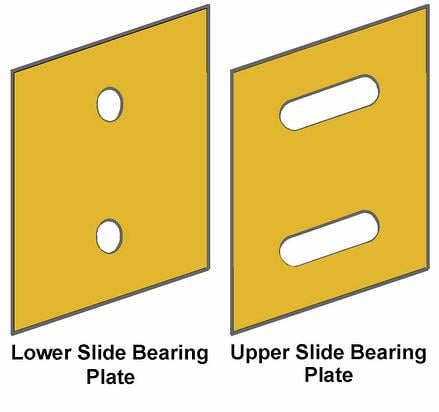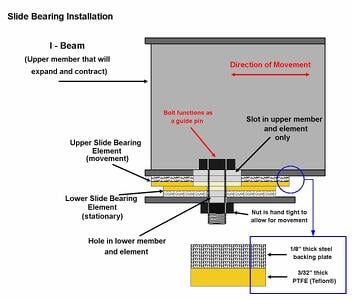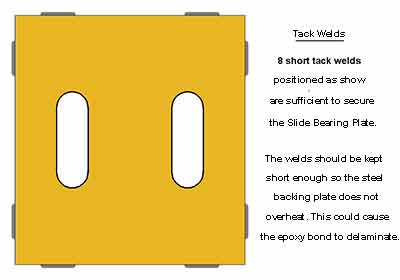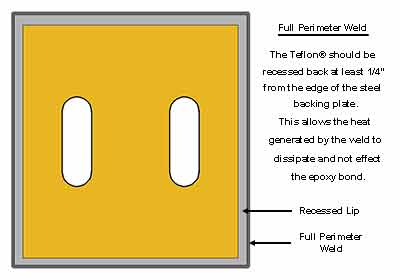Slide Bearing Installation
There are many ways a Slide Bearing will be utilized in Steel Construction. Shown below is the most common, where the lower member remains fixed, and the upper member travels with the expansion and contraction of the structure.
 The Lower Slide Bearing Plate shown above left will usually have holes for the connecting bolt to pass through. The Slide Bearing Plates are tack welded to the steel members. The connecting bolt acts a a guide pin to keep the beams in line as the movement occurs. To allow for sliding without unnecessary pressure the bolt is only hand tight. The Upper Slide Bearing Plate has slots to allow it to travel as the expansion and contraction creates movement.
The Lower Slide Bearing Plate shown above left will usually have holes for the connecting bolt to pass through. The Slide Bearing Plates are tack welded to the steel members. The connecting bolt acts a a guide pin to keep the beams in line as the movement occurs. To allow for sliding without unnecessary pressure the bolt is only hand tight. The Upper Slide Bearing Plate has slots to allow it to travel as the expansion and contraction creates movement.

Slide Bearing Welding - Tack Weld
When the Slide Bearing is to be welded the most common method is tack welding. As shown below, 8 short welds are usually enough. Care should be excercised not to overheat the steel backing plate. While the epoxy bond is quite strong, overheating could cause the Teflon® and Slide Bearing Plate to delaminate.

Slide Bearing Welding - Full Perimeter Weld
If a full perimeter weld is specified the heat created will cause the epoxy bond to melt. The PTFE/Teflon®/Fluorogold® will separate from the steel backing plate near the edges. This will lead to premature failure of the entire assembly.
To avoid this situation the Slide Bearing is manufactured with the Teflon® recessed at least 1/4" back from the edge of the steel backing plate. The heat generated by the weld will not transfer at a high enough temperature to effect the epoxy bond.




